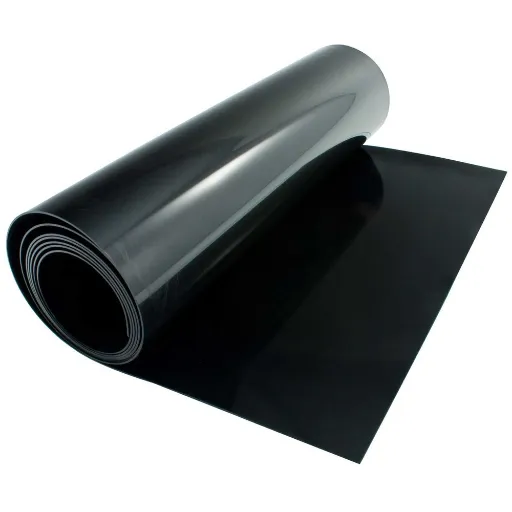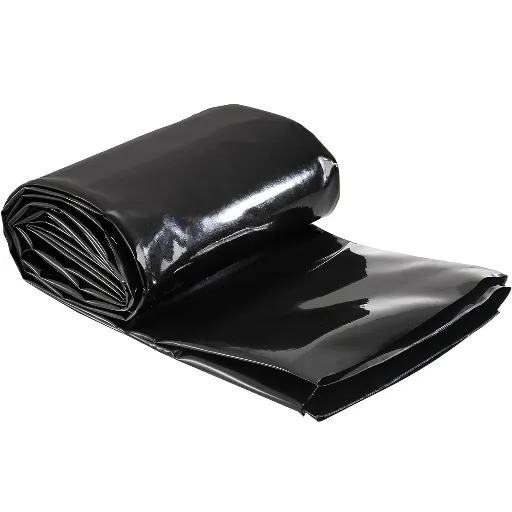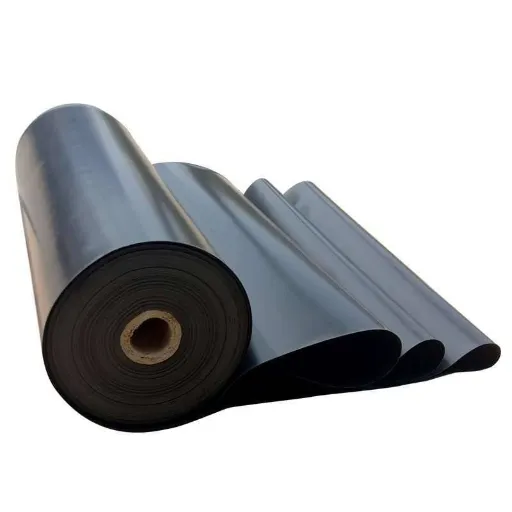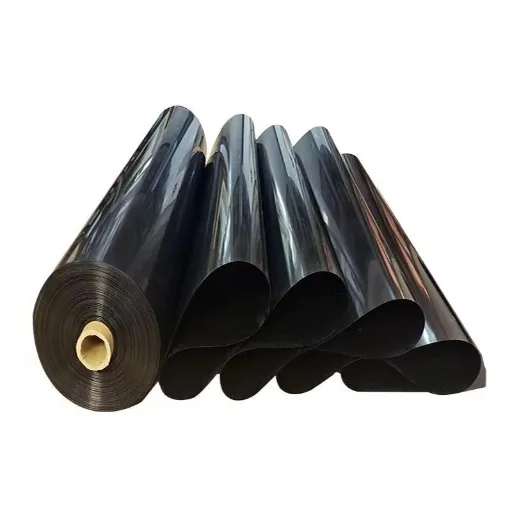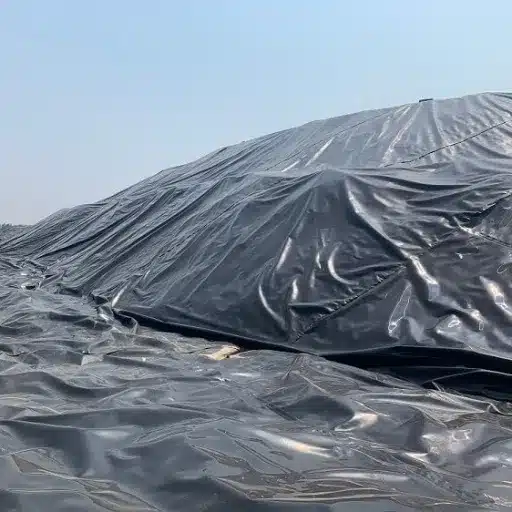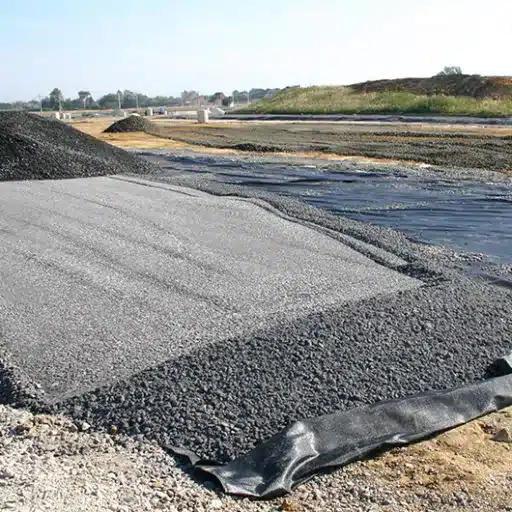Trees are essential to the environment but are often vulnerable to damage which may affect their health. Poorly damaged bark, it may act as an aggravating element if not treated, from storms, landscaping accidents, pest activities, or so. This article will explore why it is important to protect tree trunks, with a special focus on how wrapping can provide protection from further damage and promote healing of affected bark. By the end, you should be able to provide these trees with any opportunity to grow strong and resilient for many years to come.
Importance of Tree Trunk Being Healthy
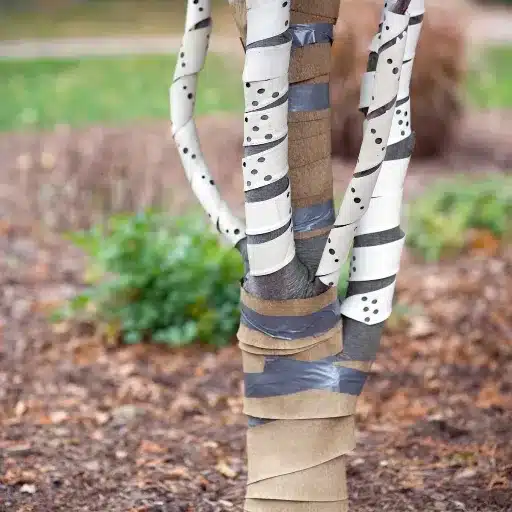
The tree trunk is crucial to the overall well-being and life span of a tree. The trunk is the primary support system of a tree; in addition to that, it contains the vascular system that carries water, nutrients, and sugars between the root and canopy of the tree. If damage occurs to the trunk, be it in the form of cracking or wounding from a pest attack, such damages would in turn hinder these functions and leave trees open to diseases or structural failures.
📊 Research Highlights:
- A mature tree absorbs 48 pounds of carbon dioxide annually (U.S. Forest Service)
- Impaired trunks reduce trees’ ability to fulfill ecological functions
- Damaged trunks pose higher risk of breakage during storms
The data further suggest that protecting tree trunks from damage can also extend their life and make them more resilient to damage. Many experts consider such-applications of trunk protection-wrapping with specialized tree guards and mulching practices-first line methods of safeguarding the trunk from damage, preventing sunscald, and discouraging pests. When the tree’s trunk is given priority, homeowners and landscapers can ensure that the trees will continue to provide environmental, aesthetic, and economic returns for generations to come.
Understanding Bark Functions of Trees
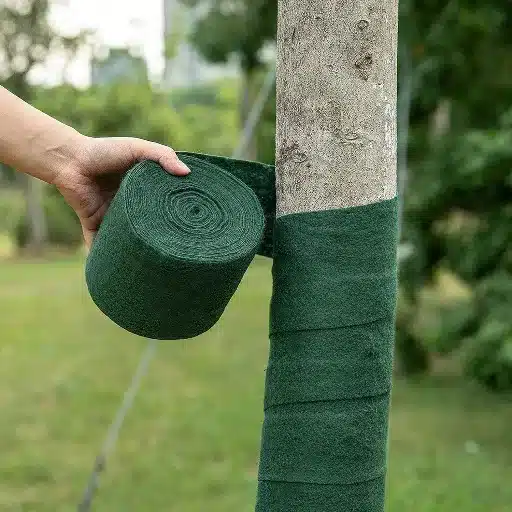
Trees bark can be related closely to the well-being and survival of a tree. Some structural defense: protect against environmental hazards like extreme weather, mechanical injuries, and invasion by pests or fungi. Bark has two layers-the outer bark and the inner bark. External bark serves as a barrier against moisture loss and from harmful external factors, whereas the inner bark (phloem) conducts nutrients and sugars created from photosynthesis to other sections of the tree.
🛡️ Outer Bark
Protective barrier against moisture loss and external factors
🌿 Inner Bark (Phloem)
Conducts nutrients and sugars from photosynthesis
The control of fire and bark thickness will vary from species to species and will greatly affect a tree’s value to resist fires or pests. For example, according to the USDA, thicker bark species tend to resist wildfires better compared with thinner-barked species, such as individual oak or pine.
Besides physical protection, studies of bark reveal that, chemically, bark is very important in discouraging feeding by herbivores and inhibiting fungal attacks. Moreover, tree bark mediates water retention, temperature regulation, and gas exchange. Ecological studies report that bark in arid environments is often adapted for efficient water conservation.
Common Causes of Trunk Damage
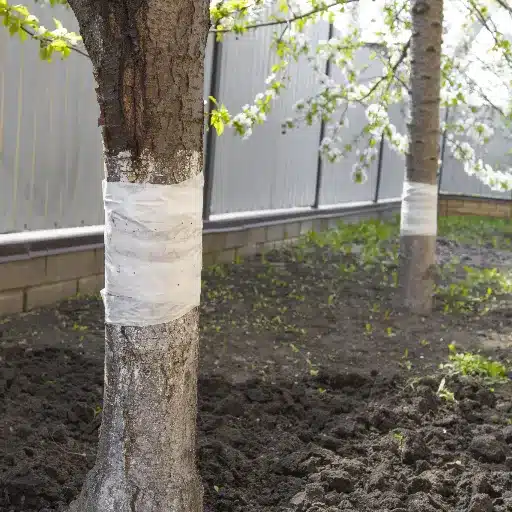
Environmental Factors Affecting Tree Health
The tree stability and health are governed by environmental factors, by and large; trunk damage is often the combined effect of natural and human interferences. One of these factors is climate change, which exacerbates weather patterns and intensifies the stresses acting on trees.
⚠️ Climate Impact Statistics:
- Global drought frequency increased by 29% since early 20th century (EPA)
- Urban tree mortality rates are 20% higher than rural settings
- Temperature swings cause frost cracks in transitional seasons
Among extreme weather occurrences are those with storms, hurricanes, and floods placing another heavy toll on trunk damage. Standing floodwaters for an extended period may cause bark rot and suffocation of roots, while high winds cause breakage or uprooting. Urban trees face even more troubles with soil compacting, pollution, and heat island effects exacerbating trunk damage.
Mechanical Injuries from Mowers
Trees are sometimes badly injured by whatever machinery is being used to cut grass or clear weeds close to them, during some maniacal mowing or gardening activity. Such injuries range from incidental contact with trunk, roots, or lower branches of the tree during grass or weed management.
🚨 Mechanical Injury Impact:
- Can reduce tree health by up to 50%
- 30% of urban tree decline relates to mechanical injuries
- Small trees most vulnerable due to thinner bark
Prevention includes mulch rings around the base of trees, the use of guards for landscaping equipment, and maintaining proper distance when mowing. Further today’s research shows that urban-specific tree guard design can prevent 70% of common mechanical injuries.
Benefits of Tree Wraps
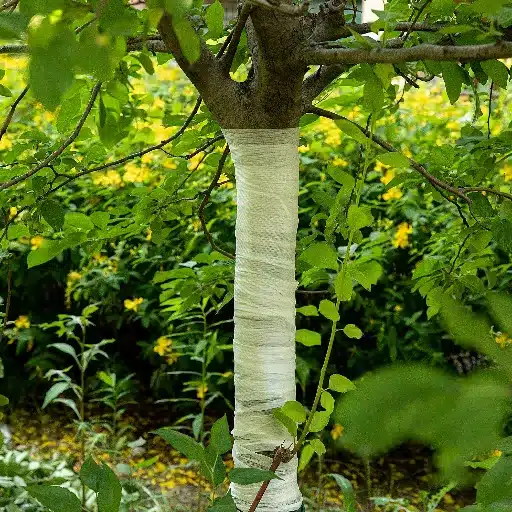
Tree wraps help protect trees against mechanical damages, extreme weather conditions, and pests. They really come into play in providing protection to young or thin-barked trees when they go through their most vulnerable phases induced by external environment and thus develop healthier and stronger over time.
Protection Against Frost and Sunscald
Protection of trees from frost and sunscald is considered crucial to their health and longevity in these areas where these extremes greatly occur. When frost damage occurs, water within the tree freezes and ruptures the cells. This usually affects young trees or species that are not very tolerant to cold temperatures. Whereas sunscald occurs mostly in the winter, when the sun heats the bark in its rays during daylight, and the temperature drops rapidly as night shrouds it in cold.
❄️ Tree Wrap Effectiveness:
- Reduces frost damage by up to 50% for vulnerable saplings
- Multi-measure approaches increase survival rates by 70%
- Reflective wraps protect against harmful UV rays
Encouraging Recovery of Damaged Bark
With proper treatment and care, the damaged bark on a tree can be put into recovery. Bark injuries are brought about by mechanical damages, weather extremes, or pests. To promote healing, the wounded area must be cleansed by removing all jagged or loose bark with sterilized tools in such a manner so as to inflict no further injury upon the tree.
🌱 Recovery Statistics:
- Most healthy trees show recovery signs in 6-12 months
- Proper techniques increase healing likelihood by 40%
- Natural compartmentalization is the best healing method
How to Apply Tree Wrapping Properly
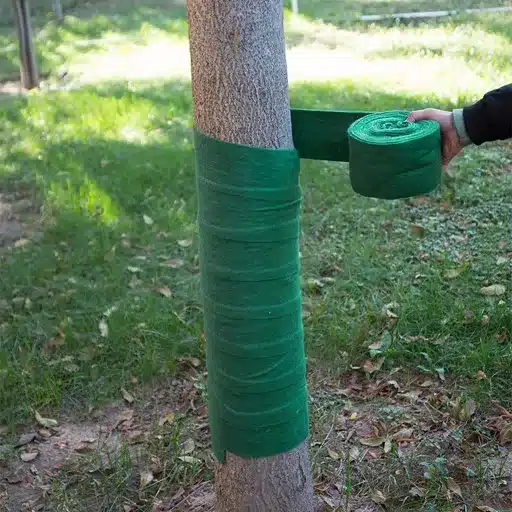
📋 Step-by-Step Process:
- Clean the injured area – Remove debris and check for pests
- Start wrapping from the base – Begin at the bottom of the trunk
- Overlap each layer – Ensure slight overlap as you proceed upward
- Secure at the top – Fasten lightly, allowing room for growth
Selecting the Correct Tree Wrap
The right tree wrap must be selected for the tree to be suitably protected and to recover properly. Tree wraps are made in a series of materials such as burlap, plastic, and paper-based wraps, each having certain advantages depending on the type of tree and the climatic conditions.
| Wrap Type | Best For | Key Benefits |
|---|---|---|
| Burlap Wraps | Young trees, fluctuating temperatures | Breathable, natural insulation |
| Plastic Wraps | Pest protection, harsh weather | Durable, strong protection |
| Paper-based Wraps | Eco-friendly applications | Biodegradable, UV protection |
💡 Pro Tip: Research shows that they retain about 30 percent less moisture when wrapped with breathable wraps, reducing the risk of fungal infection. Properly chosen wraps can increase tree resilience by up to 25%.
Essential Maintenance Tips for Tree Wraps
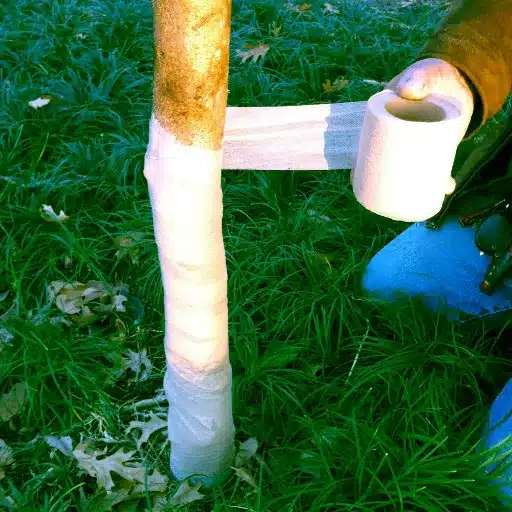
🔍 Regular Checks for Damage
Inspect wraps every 2-3 weeks to ensure they remain in place and damage-free.
Impact: Reduces bark injuries by 18%
⚖️ Avoid Over-Tightening
Keep wraps snug but never tight to allow natural tree expansion.
Risk: Over-tightening delays healing by 30%
🧽 Keep Clean and Dry
Check after heavy rain and remove damp sections promptly.
Benefit: Reduces fungal infections by 20%
🔄 Replace When Necessary
Replace biodegradable wraps yearly or when environmental conditions degrade them.
Timeline: Annual replacement recommended
Reference Sources
-
LawnStarter Blog
- Title: “Tree Wrap: What It is, Why to Use It, and How”
- URL: LawnStarter Blog
- Summary: This article explains the purpose of tree wraps, their benefits in protecting against sunscald, frost cracks, and other environmental damages, and provides practical advice on how and when to use them.
-
Oklahoma State University Extension
- Title: “Wrapping Tree Trunks Helps Boost Tree Health”
- URL: OSU Extension
- Summary: This source discusses the importance of wrapping tree trunks to protect against winter damage and offers insights into the best practices for using tree wraps effectively.
-
University of Minnesota – Tree Stem Protection Fact Sheet
- Title: “Tree Stem Protection”
- URL: University of Minnesota
- Summary: This fact sheet provides detailed information on the vulnerabilities of tree trunks and the role of protective measures like tree wraps in maintaining tree health.
Frequently Asked Questions (FAQs)
❓ How does tree wrapping protect damaged bark?
Tree wraps protect damaged bark by shielding them against external elements such as frost, sunscald, or even rodent activity. Similarly, it maintains the health of the tree and allows healing of the bark’s wounds.
❄️ Is burlap tree wrap suitable for winter protection?
Yes, the burlap tree wrap provides excellent winter protection since it is breathable and can help insulate young trees from cold temperatures. It prevents frost while keeping away moisture, thereby hindering the growth of mold and eventual decay.
🌀 What is another advantage of using spiral tree guard tree trunk?
The spiral tree guard tree trunk serves as a physical barrier that protects bark damage caused by mowweries and rodents. This spiral on another note can almost fit any tree shape, thus offering very good protection to the trunk and bark.
🔧 How does one wrap his/her tree wrap down for a damaged tree?
When wrapping damaged trunks, begin at the base of the tree and wrap the material upward around the trunk, overlapping each layer slightly. The wrap must fit snugly but not too tightly or else it would restrict the ever-growing charger. Secure the wrap using biodegradable tape or ties.
📄 What is the difference between paper tree wrap and breathable tree bark repair wrap?
Paper tree wrap is often used for winter protection and insulation, whereas breathable tree bark repair wraps allow moisture and air circulation, aiding in healing damaged bark. The choice mainly depends on the tree’s needs.
⏰ When does one remove the tree wrap?
The tree wrap should generally be removed in early spring, when the danger of frost has gone. Otherwise, watch out for signs of stress or damage in your trees, for they may be a good reason to remove the wrap sooner.
🌳 Protect Your Trees Today
Implementing proper tree wrapping techniques can significantly extend your trees’ lifespan and enhance their resilience against environmental stressors. Start protecting your valuable trees with the right wrapping materials and maintenance practices.


